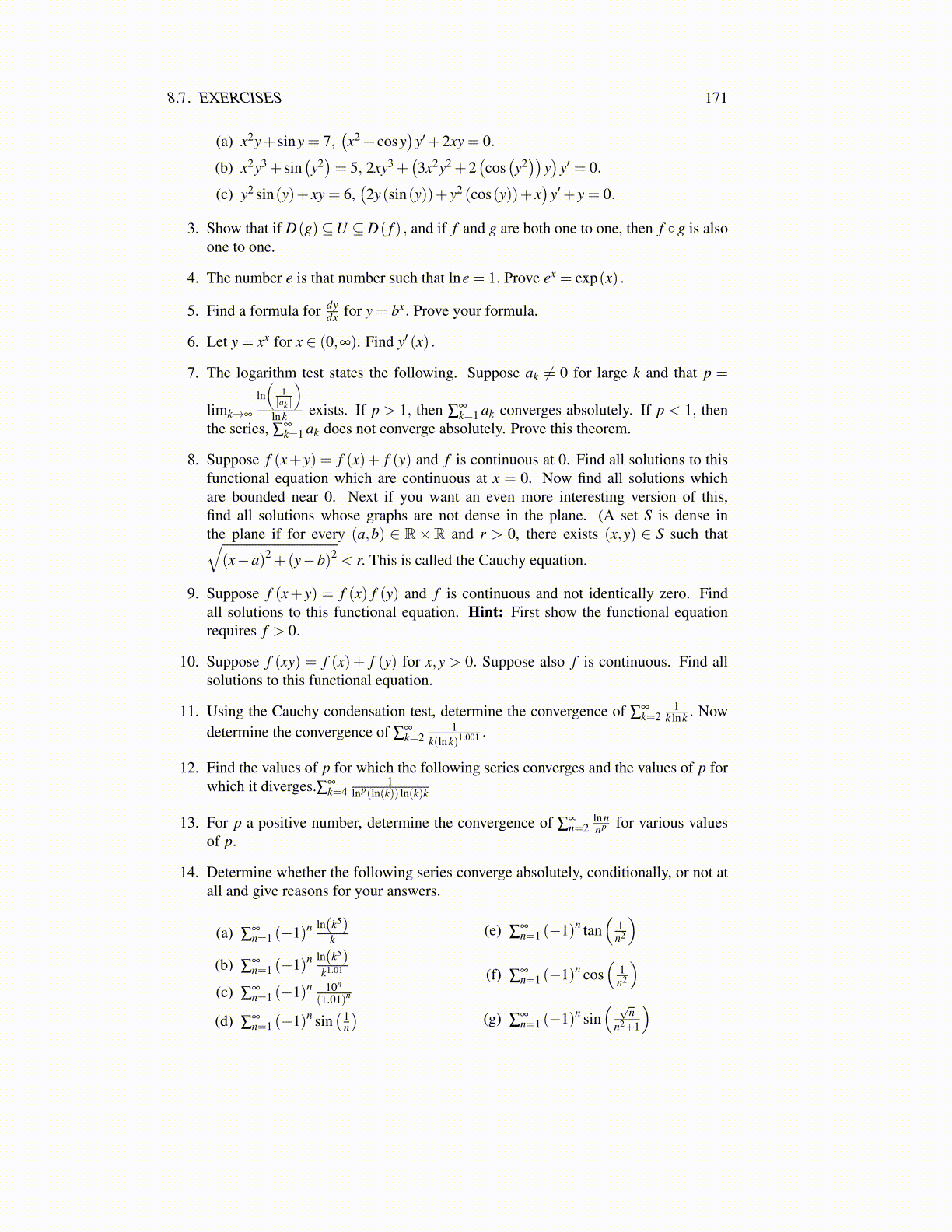
8.8. L’HÔPITAL’S RULE 171
Proof: By the definition of limit and 8.20 there exists c < b such that if t > c, then∣∣∣∣ f ′ (t)g′ (t)
−L∣∣∣∣< ε
2.
Now pick x,y such that c < x < y < b. By the Cauchy mean value theorem, there existst ∈ (x,y) such that
g′ (t)( f (x)− f (y)) = f ′ (t)(g(x)−g(y)) .
Since g′ (s) ̸= 0 for all s ∈ (a,b) it follows from the mean value theorem g(x)−g(y) ̸= 0.Therefore,
f ′ (t)g′ (t)
=f (x)− f (y)g(x)−g(y)
and so, since t > c, ∣∣∣∣ f (x)− f (y)g(x)−g(y)
−L∣∣∣∣< ε
2.
Now letting y→ b−, ∣∣∣∣ f (x)g(x)
−L∣∣∣∣≤ ε
2< ε.
Since ε > 0 is arbitrary, this shows 8.21.The following corollary is proved in the same way.
Corollary 8.8.2 Let [a,b]⊆ [−∞,∞] and suppose f ,g are functions which satisfy,
limx→a+
f (x) = limx→a+
g(x) = 0, (8.22)
and f ′ and g′ exist on (a,b) with g′ (x) ̸= 0 on (a,b). Suppose also that
limx→a+
f ′ (x)g′ (x)
= L. (8.23)
Then
limx→a+
f (x)g(x)
= L. (8.24)
Here is a simple example which illustrates the use of this rule.
Example 8.8.3 Find limx→05x+sin3x
tan7x .
The conditions of L’Hôpital’s rule are satisfied because the numerator and denomina-tor both converge to 0 and the derivative of the denominator is nonzero for x close to 0.Therefore, if the limit of the quotient of the derivatives exists, it will equal the limit of theoriginal function. Thus,
limx→0
5x+ sin3xtan7x
= limx→0
5+3cos3x7sec2 (7x)
=87.
Sometimes you have to use L’Hôpital’s rule more than once.
Example 8.8.4 Find limx→0sinx−x
x3 .